Dusky Pigmy Rattlesnakes - Sistrurus miliarius barbouri
Pigmies are always a fun find despite how common they are. Their variability and jumpy disposition makes them an attractive photo subject. After spending a few minutes photographing two of the snakes, I continued on to my grandparents' place to visit with them. A few days later the weather again warmed and my roommate and I headed out to central Florida's Green Swamp to try our hand at the roads in the area. Several DOR peninsula ribbon snakes and one large DOR yellow rat were seen on the roads, it wasn't until about 5:00 PM that our first live snake was found.
Florida Cottonmouth - Agkistrodon piscivorus conanti
This brilliantly marked Florida Cottonmouth was coming out of a small cypress swamp and was heading towards a flooded ditch on the opposite side of the road. I'm really pleased with how effective the new Lumiquest Softbox I ordered performed on this trip, the softened light in these photos is just what I was looking for. After snapping a few photos of this snake, we were on our way. The next morning, we packed up early and jetted south to spend a few nights in the Everglades. After setting up camp we headed towards Flamingo in hopes of seeing some crocs basking in the late afternoon sun. As we were rounding a corner, we noticed a huge shape laid out in our lane ahead and drove up to see this.
Python! A truly exciting find for me, this adult was in the 7-8 foot range and had been clipped by a car and was struggling to make it across the road. This was the fifth time I've been to the Everglades and the first python I've ever seen in the area. I managed to get this snake corralled and posed up for a few photos.
Burmese Python - Python molurus bivittatus
The Everglades pythons really are a gorgeous snake, unfortunately they do not belong here. Endemic to southeast Asia, the Burmese Python was introduced to southern Florida more than a decade ago due to escapees and other released snakes. Since that time the python population in south Florida has exploded, some biologists estimate there are between 30,000-100,000 pythons in the Everglades. This invasive species has wreaked havoc on southern Florida ecosystems and wildlife and in turn has caused drastic declines in some mammal populations. Adults can reach in excess of 15 feet in length and can weigh over 150 pounds. A rare cold snap reduced their numbers to some degree a few years ago, but there are still a lot of them in the region. Continuing work is being conducted by the National Park Service, Florida FWC, Nature Conservancy, and U.S. Fish & Wildlife Service to control the spread of this large constrictor. Later on that night we explored the park after dark in hopes of seeing some snakes out on the move. Things were relatively slow until we spotted a brightly colored snake crossing the road in front of us. From a distance, I thought it was a yellow rat snake but it turned out to be a very odd looking corn snake.
Corn Snake - Pantherophis guttatus
This snake was a real treat to find as it looked like it belonged in a pet store. The odd look of the snake is due to a condition known as amelanism, a genetic abnormality that causes a lack of melanin (dark pigments) in an individual. This is basically the exact opposite of melanism which causes snakes to be completely black. Here's a photo of a normal looking corn snake for reference.
Generally snakes that are amelanistic or albino do not survive for long in the wild as they are much more conspicuous to predators. But this snake was a sub-adult (18-20 inches in length) and was found in an area where I've seen a lot of corn snakes in the past and is almost 40 miles into the national park. It would seem odd for a person to drive so far into the park to release a perfectly good corn snake into the wild. We continued on and cruised up a few more of the common inhabitants of the everglades.
Florida Water Snake - Nerodia fasciata pictiventris
Florida Cottonmouth - Agkistrodon piscivorus conanti
We also checked a few abandoned buildings after dark in hopes of finding a few snakes hanging around, but only managed a few of these guys.
Tropical House Gecko - Hemidactylus mabouia
Green Treefrog - Hyla cinerea
Later on in the night we bumped into Pierson Hill and his girlfriend Kim and chit chatted for a bit. He was kind enough to let me photograph this snake species.
Mangrove Salt Marsh Snake - Nerodia clarkii compressicauda
This species is found along the Florida coast and inhabits brackish and saltwater estuaries, salt marshes, and tidal mud flats. This species is known to interbreed with the Florida Water Snake (Nerodia fasciata pictiventrisdorsum, and may have a deep red ventral surface. Red phase individuals are usually a orange-red in color and have almost no patterning at all. Because of all the hybridization many animals may look variable and may have characteristics of both species or look odd. The next morning I spent a little time photographing some wading birds along Anhinga Trail.
Green Heron - Butorides virescens
American Bittern - Botaurus lentiginosus
It was exciting to get to photograph this American Bittern, as it is a shy species which rarely is seen outside of heavy cover. Bitterns are denizens of freshwater marshes and sloughs with tall, dense vegetation which allows them to remain well hidden because of their coloration. Their loud, booming call is very distinct but it is difficult to see one outside of the cover. This bird remained motionless and allowed for a good fifteen minute photo session before it wandered back into cover. The weather turned bad so we headed back upstate to spend a few more days in central Florida. I spent an evening cruising road in the Green Swamp and first up on the road was this sharp juvenile racer.
Southern Black Racer - Coluber constrictor priapus
Young racers always exhibit patterning and eventually lose it as they mature towards adulthood. This snake was laid out on a forest road soaking up some sun. A little further up the road, I was greeted by my second snake of the afternoon near a cypress swamp.
Florida Cottonmouth - Agkistrodon piscivorus conanti
Another adult cottonmouth was seen crossing the road nearby but made a hasty exit before I could snap a photo of it on the road. The next day was spent packing up our gear and preparing for a long drive home thru the night to avoid heavy traffic in cities like Atlanta and Knoxville. So we had some time to kill during the day. I swung down to a creek in my grandparents' neighborhood that I've fished many times and have seen several Brown Water Snakes active along.
While explaining old snake stories from this spot to my roommate and sister, I noticed a dark coil on the opposite creek bank and decided to go investigate. I was fairly happy when I noticed this pair basking side by side at the creek's edge.
Cottonmouths have had a pretty tough run in my grandparents' neighborhood. Its a typical Florida retirement community which has several golf courses and tons of houses all situated among cypress swamps, creeks, and hammocks. I've heard so many stories about cottonmouths being killed and how many there were, but in all the years I've visited my grandparents I had never seen one in their neighborhood. I had figured they were pretty much wiped out here due to all of the people who kill them in the area, but right in front of me were two adults. One with a severely damaged face, and the other was what could possibly be the most attractive adult moccasin I've ever seen.
Florida Cottonmouth - Agkistrodon piscivorus conanti
Although this species was the most common snake seen on our trip, these two individuals were a very special find for me. Amid twenty plus years of habitat encroachment and being relentlessly killed by residents, these two adults were right here in front of me, something I didn't thought existed in this neighborhood anymore. I guess after so many years of looking for them in my grandparents' neighborhood with no luck had convinced me they were long gone, but I suppose I shouldn't be too surprised. After all, life finds a way.




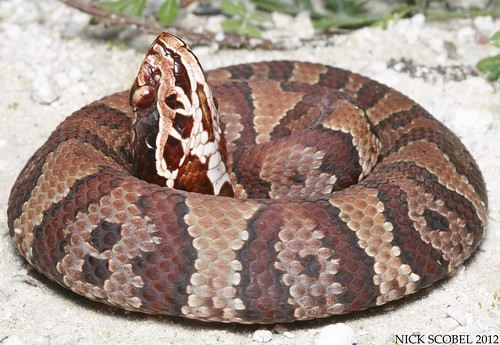
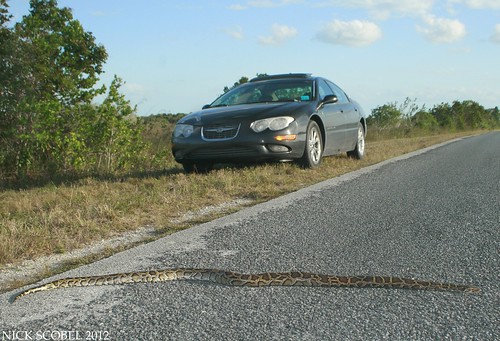

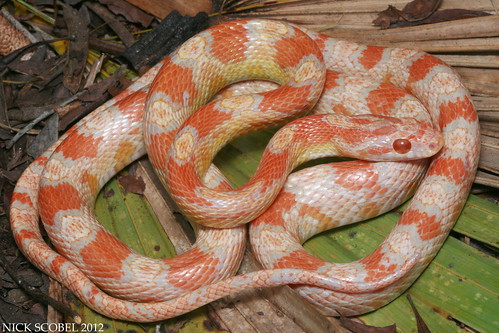

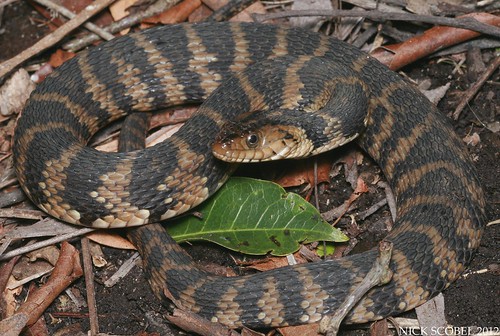

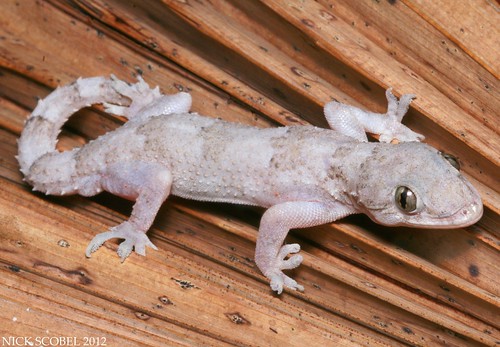
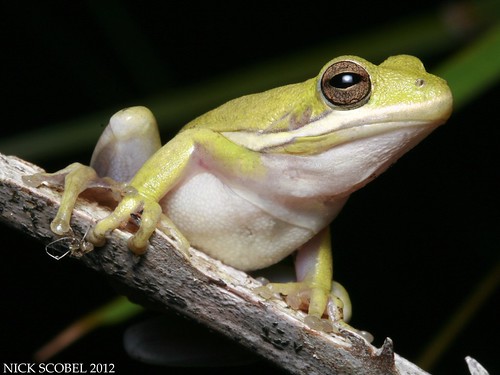
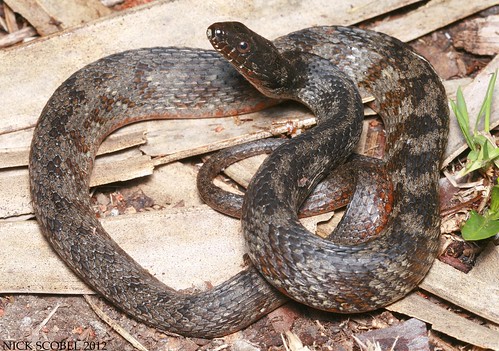
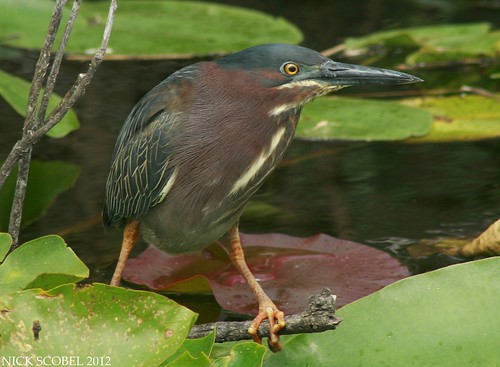

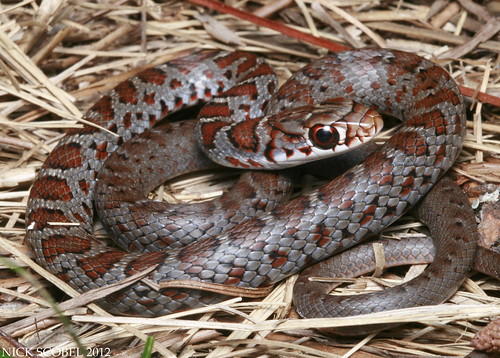

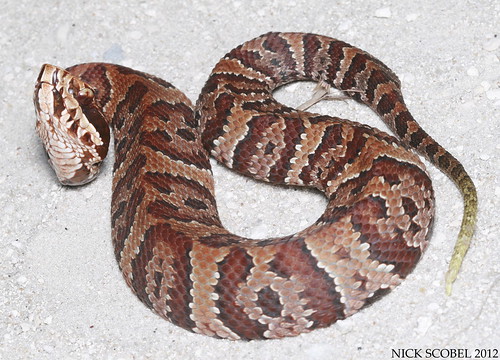
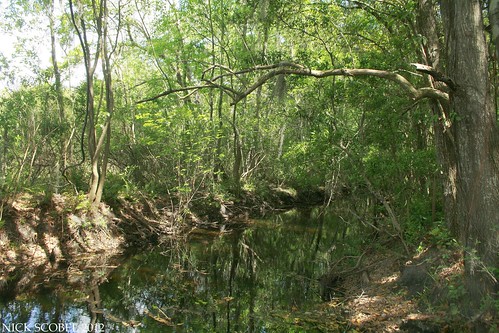
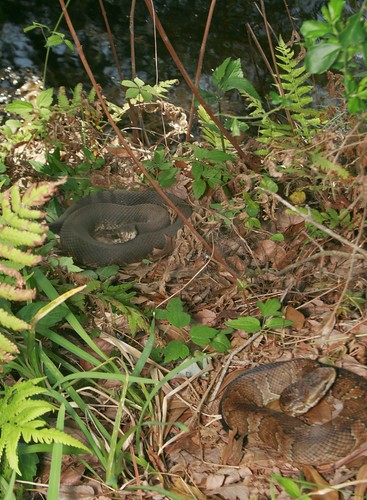
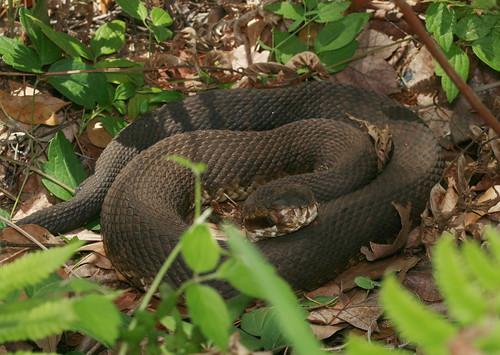
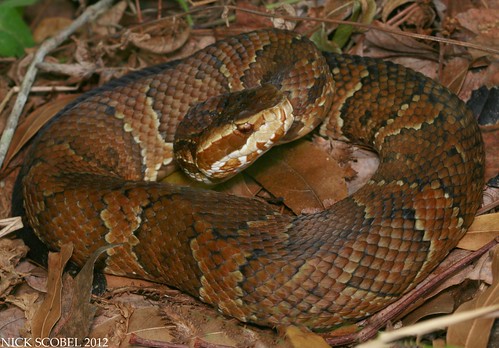
Wow, what a productive trip. I have fond memories of spring road-cruising in Florida. Great finds, the corn snake in particular. Stunning pics; nice job.
ReplyDelete